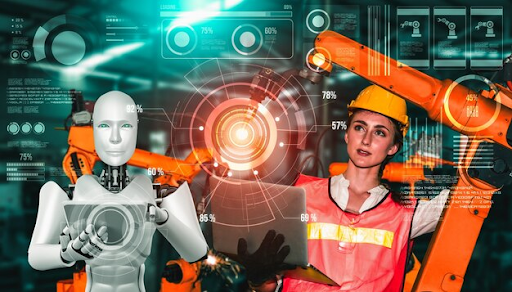In a world where technology advances at breakneck speed, industries are under constant pressure to adapt, improve, and evolve. Among the many innovations reshaping our digital landscape, one name has emerged at the intersection of tradition and technological transformation—Lidarmos. Combining the tried-and-true methods of conventional imaging with the dynamic capabilities of smart technology, Lidarmos is redefining how we perceive, process, and utilize visual data across diverse sectors.
Whether you’re in healthcare, agriculture, construction, or manufacturing, understanding Lidarmos could offer you the competitive edge you need to thrive in the modern era. This blog explores the origins, mechanisms, applications, benefits, and future potential of Lidarmos, providing a comprehensive guide to this powerful tool.
Understanding Lidarmos:
Lidarmos is not just another buzzword in the tech world. It represents a holistic approach to visual data analysis, uniting traditional imaging practices with cutting-edge smart systems such as AI, machine learning, and real-time analytics. Think of it as a hybrid framework—an intelligent bridge between analog precision and digital innovation.
The name Lidarmos stems from the fusion of “Lidar” (Light Detection and Ranging) and “Mosaic Imaging”—two concepts integral to how this technology functions. By combining laser-based scanning with composite data visualization, Lidarmos delivers high-resolution, multidimensional perspectives that would be impossible through traditional means alone.
What sets Lidarmos apart is its ability to synthesize both macro and micro data through advanced sensors, machine learning algorithms, and historical imaging techniques. This integration allows users to gain enhanced insights with greater accuracy and contextual relevance.
The Evolution of Imaging: From Analog to Lidarmos
To appreciate Lidarmos fully, it’s essential to trace the historical trajectory of imaging technology.
In the early days, imaging relied heavily on physical tools—manual drawings, photographs, and X-rays. These methods required human expertise and were often limited by environmental and material factors. With the introduction of digital sensors and imaging software in the late 20th century, we witnessed an explosion in speed and accessibility.
The 2000s introduced AI into the equation, allowing machines to recognize patterns and learn from large datasets. However, even these systems lacked the nuanced precision of hands-on human input. This is where Lidarmos shines—it doesn’t discard traditional methods but rather enhances them.
Lidarmos evolved as a response to the industry’s growing need for adaptable, accurate, and context-aware visual technologies. It respects the roots of imaging while boldly stepping into the future.
Core Components of Lidarmos Technology
To understand how Lidarmos works, let’s explore its essential components:
1. Traditional Imaging Infrastructure
Lidarmos integrates legacy systems such as CT scans, photographic archives, or manual sketches, preserving historical consistency in visual analysis.
2. Smart Imaging Sensors
These sensors detect variables such as light intensity, material density, and temperature variations in real-time, feeding data into an intelligent ecosystem.
3. Machine Learning Algorithms
Lidarmos platforms are built on adaptive learning models that interpret visual data, make predictions, and even recommend corrective actions.
4. Cloud Connectivity
Data is stored, processed, and shared via cloud networks, ensuring accessibility and collaboration across teams and locations.
5. Visualization Interface
Users interact with Lidarmos through advanced dashboards that offer 3D models, layered images, and simulation tools.
Use Cases of Lidarmos Across Industries
Lidarmos is as versatile as it is powerful. Its applications stretch across numerous industries:
Healthcare
Doctors use Lidarmos to detect early signs of diseases like cancer by layering current scans with historical patient imagery.
Agriculture
Farmers monitor soil quality, crop health, and water levels with high-definition imaging that adapts to environmental changes.
Construction
Project managers overlay blueprints with live site imagery to identify deviations and track progress in real-time.
Manufacturing
Factories employ Lidarmos for quality assurance, detecting defects that the human eye or traditional cameras might miss.
Retail and Inventory Management
Smart shelves and inventory systems use Lidar to monitor product placement, stock levels, and customer behavior.

Real-World Case Studies Demonstrating Lidarmos’ Success
Healthcare Sector in Europe
A European hospital adopted Lidarmos for post-surgical follow-up imaging. By layering before-and-after scans using AI, they improved diagnosis accuracy by 35% and reduced follow-up times by 40%.
Smart Agriculture in Australia
A farm in New South Wales implemented Lidar sensors across 500 acres. Over one growing season, crop yield increased by 22% due to timely soil and hydration analysis provided through smart imaging.
Manufacturing in Japan
A high-end electronics manufacturer used Lidar to scan micro-defects in circuit boards. Their product rejection rate fell from 8% to 1.2%, saving millions annually.
Infrastructure Inspection in the US
Bridge inspection teams employed Lidarmos-enabled drones to scan surface integrity. The technology helped reduce inspection times from two weeks to three days, with 99% data accuracy.
The Benefits of Using Lidarmos
Enhanced Accuracy
Thanks to smart imaging and machine learning, Lidarmos can detect anomalies and subtle changes that even trained professionals might miss.
Time Efficiency
With real-time feedback and cloud integration, decisions can be made faster, reducing operational downtime.
Data-Rich Insights
Lidarmos doesn’t just present images—it interprets them. With analytics dashboards and predictive modeling, users gain actionable insights.
Environmental Sustainability
By optimizing processes and reducing waste (especially in agriculture and manufacturing), Lidarmos contributes to sustainable practices.
Scalable and Customizable
Lidarmos solutions can be tailored to small businesses or large enterprises, offering modularity without compromising performance.
Challenges and Considerations
Despite its transformative potential, Lidarmos is not without challenges. The initial setup cost may be a barrier for small-scale operations. Additionally, interpreting AI-generated results requires training and oversight to prevent misapplication.
Data privacy is another significant concern. In industries like healthcare, the integration of cloud systems demands robust security protocols to protect sensitive information.
Finally, over-reliance on technology can sometimes lead to complacency. Human oversight remains critical to interpret, question, and correct automated decisions when necessary.
What Lies Ahead for Lidarmos?
The roadmap for Lidarmos is paved with innovation. As hardware becomes more compact and affordable, we can expect broader adoption across low-income regions and smaller organizations.
AI will play a pivotal role, evolving from predictive to prescriptive intelligence, offering not only suggestions but also executing actions. Edge computing will also reduce latency in Lidarmos systems, making real-time imaging faster and more reliable.
Cross-industry collaborations are on the rise. Healthcare, logistics, and energy sectors are beginning to integrate their data into unified Lidarmos platforms. This convergence will enable holistic, multi-domain decision-making—a key factor in global digital transformation.
The final frontier may be in space and deep-sea exploration, where Lidarmos-equipped drones and submersibles could gather never-before-seen imagery, pushing humanity’s boundaries even further.
Conclusion
Lidarmos represents more than a technological leap; it symbolizes a philosophical shift in how we value tradition and embrace innovation. By blending proven methods with smart advancements, Lidarmos empowers industries to become more efficient, accurate, and sustainable.
Whether you’re a startup founder, a medical professional, or a tech enthusiast, the time to understand and integrate Lidarmos is now. Its benefits span from operational speed to environmental impact, from better diagnosis to enhanced agricultural output. As we move into a future defined by visual intelligence, Lidarmos stands ready to lead the way.
Embracing Lidarmos isn’t just about adopting a tool—it’s about entering a new era where insight and imagery converge for maximum impact. The industries that choose to integrate this powerful system will not only survive—they will thrive.
Sodiceram: Innovative Ceramics for Modern Living
FAQS
What industries benefit most from Lidarmos technology?
Industries like healthcare, agriculture, manufacturing, and construction benefit most due to their need for high-accuracy imaging, real-time decision-making, and data interpretation.
How does Lidarmos differ from traditional imaging solutions?
Lidarmos combines conventional methods with AI-driven smart imaging to provide more accurate, layered, and context-aware visual data, setting it apart from static, traditional solutions.
Is Lidarmos suitable for small businesses or only large enterprises?
Lidarmos is scalable and modular, making it suitable for both small operations seeking efficiency and large enterprises aiming for digital transformation.
What are the privacy concerns associated with Lidarmos?
As Lidarmos integrates cloud-based systems and collects sensitive data, especially in sectors like healthcare, stringent security protocols and compliance with data protection laws are necessary.
Can Lidarmos be integrated with existing infrastructure?
Yes, Lidarmos is designed to complement and enhance existing systems, often integrating seamlessly with legacy hardware and software platforms through APIs and cloud services.



